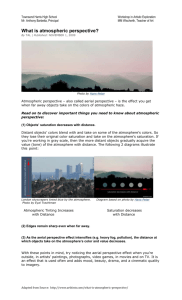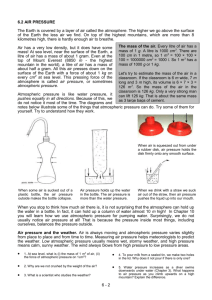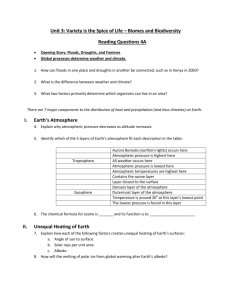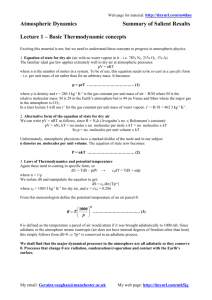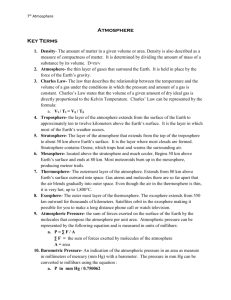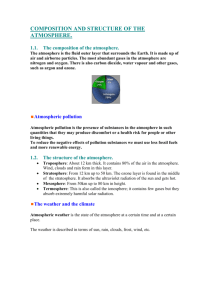Numerical simulation of the dynamics of fine
advertisement
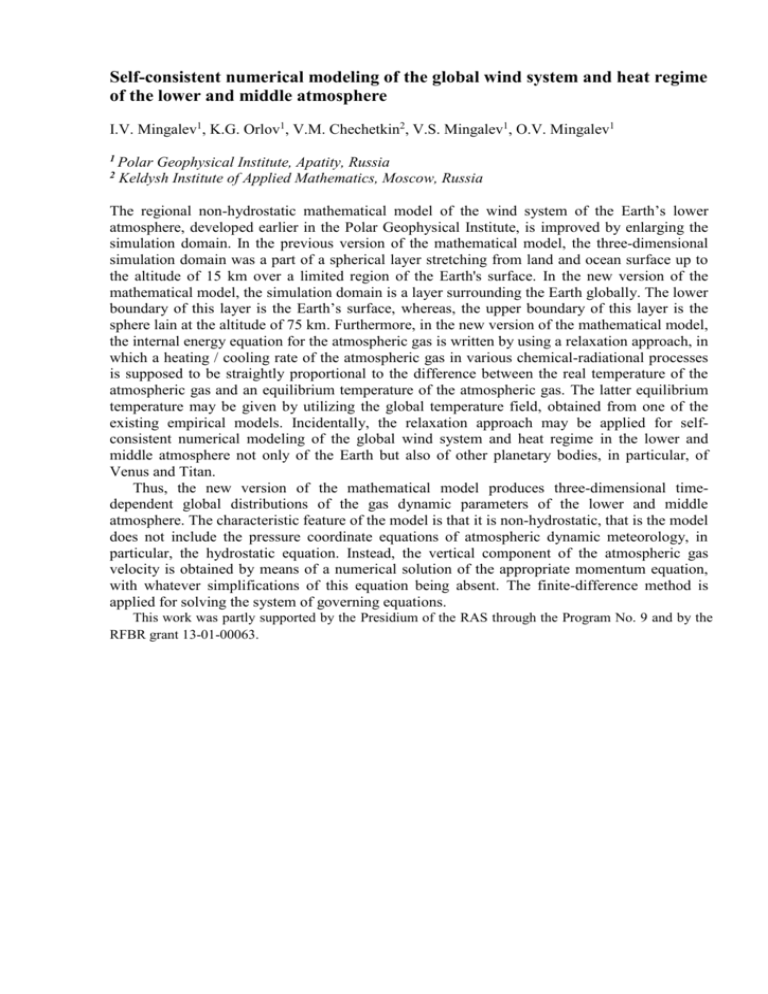
Self-consistent numerical modeling of the global wind system and heat regime of the lower and middle atmosphere I.V. Mingalev1, K.G. Orlov1, V.M. Chechetkin2, V.S. Mingalev1, O.V. Mingalev1 1 Polar 2 Geophysical Institute, Apatity, Russia Keldysh Institute of Applied Mathematics, Moscow, Russia The regional non-hydrostatic mathematical model of the wind system of the Earth’s lower atmosphere, developed earlier in the Polar Geophysical Institute, is improved by enlarging the simulation domain. In the previous version of the mathematical model, the three-dimensional simulation domain was a part of a spherical layer stretching from land and ocean surface up to the altitude of 15 km over a limited region of the Earth's surface. In the new version of the mathematical model, the simulation domain is a layer surrounding the Earth globally. The lower boundary of this layer is the Earth’s surface, whereas, the upper boundary of this layer is the sphere lain at the altitude of 75 km. Furthermore, in the new version of the mathematical model, the internal energy equation for the atmospheric gas is written by using a relaxation approach, in which a heating / cooling rate of the atmospheric gas in various chemical-radiational processes is supposed to be straightly proportional to the difference between the real temperature of the atmospheric gas and an equilibrium temperature of the atmospheric gas. The latter equilibrium temperature may be given by utilizing the global temperature field, obtained from one of the existing empirical models. Incidentally, the relaxation approach may be applied for selfconsistent numerical modeling of the global wind system and heat regime in the lower and middle atmosphere not only of the Earth but also of other planetary bodies, in particular, of Venus and Titan. Thus, the new version of the mathematical model produces three-dimensional timedependent global distributions of the gas dynamic parameters of the lower and middle atmosphere. The characteristic feature of the model is that it is non-hydrostatic, that is the model does not include the pressure coordinate equations of atmospheric dynamic meteorology, in particular, the hydrostatic equation. Instead, the vertical component of the atmospheric gas velocity is obtained by means of a numerical solution of the appropriate momentum equation, with whatever simplifications of this equation being absent. The finite-difference method is applied for solving the system of governing equations. This work was partly supported by the Presidium of the RAS through the Program No. 9 and by the RFBR grant 13-01-00063.




